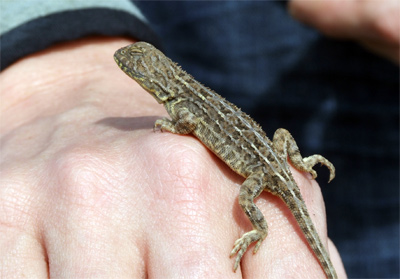Marauding kangaroos may drive extinction of earless dragons in Australia
Marauding kangaroos may drive extinction of earless dragons in Australia
mongabay.com
May 21, 2008
|
|
A plague of kangaroos overgrazing sensitive grasslands near Australia’s capital city Canberra is jeopardizing habitat critical for the survival of endangered species including the golden sun moth (Synemon plana) and the grassland earless dragon (Tympanocryptis pinguicolla), one of the world’s rarest lizards, according to German and Australian. Culling the kangaroos may be the only option for saving some of these grassland species from extinction.
In recent years the population of eastern grey kangaroo (Macropus giganteus) has exploded — Canberra now has three times as many kangaroos as people. The situation has gotten so bad that the Australian military is now culling the marsupials on the outskirts of the city. While the decision has been controversial, researchers say human impacts have boosted kangaroo numbers to unsustainable levels.
What triggered the population explosion?
Researchers from the Institute for Applied Ecology at the University of Canberra and the Helmholtz Center for Environmental Research in Leipzig have linked the boom to urbanization, specifically the elimination of natural predators, like the dingo, and the increased availability of water for kangaroos in cattle troughs and ponds. Whereas drought and predators used to keep populations in check by killing off weak kangaroos, today the animals can rely on artificial water supplies, sustaining their numbers and resulting in overgrazing of Canberra’s grasslands.
|
|
The situation has been worsened by the massive loss of Australia’s grasslands due to urban and agricultural expansion. Today grasslands have been reduced to less than five percent of their original range in the capital territory of Canberra and to about one percent South-eastern Australia. The loss has put several species — including the charismatic grassland earless dragon — on the brink of extinction in the wild.
Weighing in at only five grams and a master of camouflage, the grassland earless dragon is a lizard that lives in lives in spider burrows in the ground. The shelters protect the dragon from bush fires but not encroachment, diminishing food supplies caused by overgrazing of grasses by wildlife and livestock, or the dangers of inbreeding in a species that is so rare that it was thought to be extinct for three decades until it was rediscovered in 1991. Researchers — including Dr. Christina Castellano and Dr Marion Höhn of the University of Canberra — are now working to better understand these threats in order to determine what can be done to save the species.
“It’s difficult to make plans to conserve a species when so little is known about them,” Dr Will Osborne, a scientist at the Institute for Applied Ecology at the University of Canberra and rediscoverer of the species, said.
This article uses information from a Helmholtz Association of German Research Centres press release.
